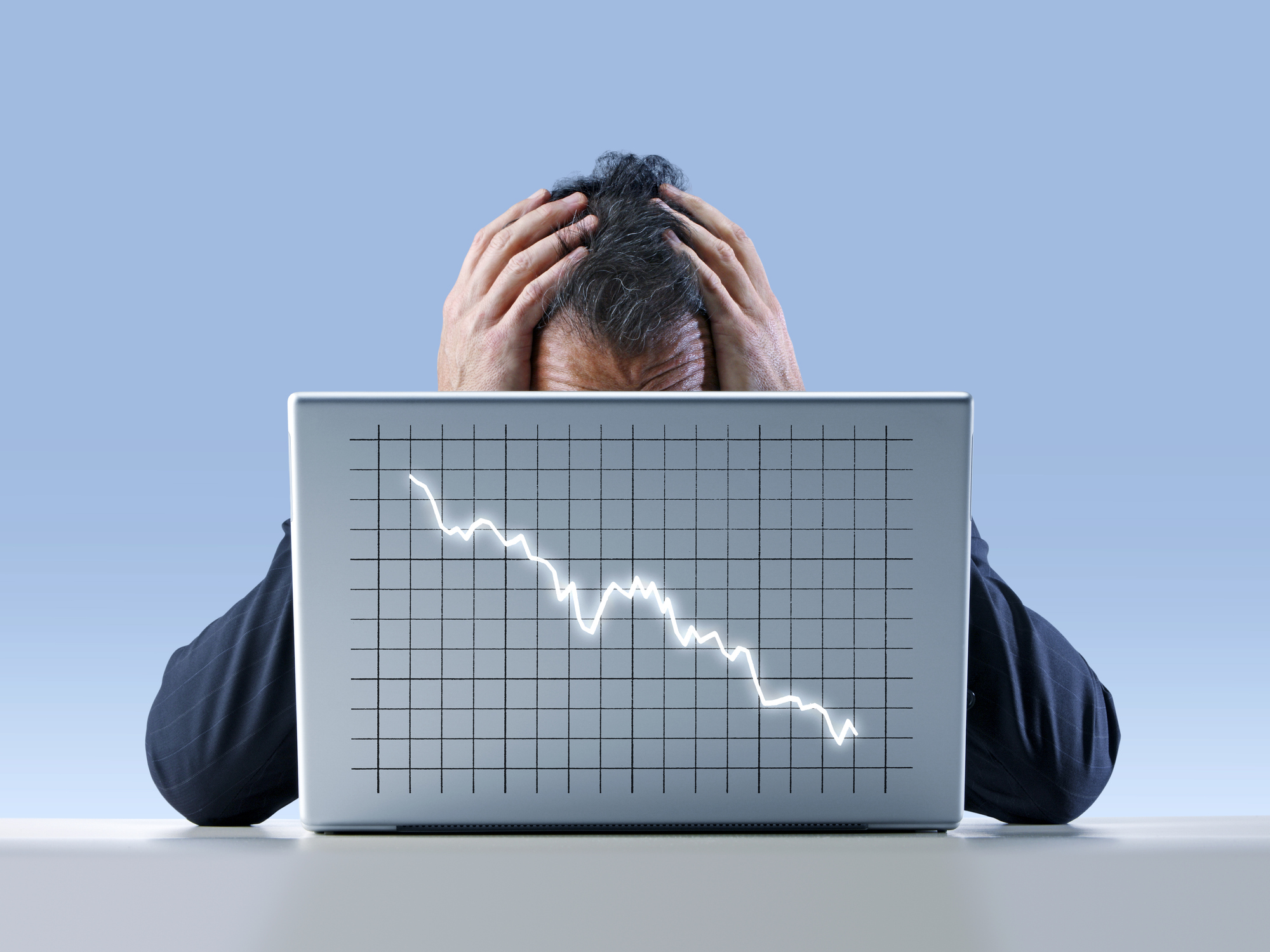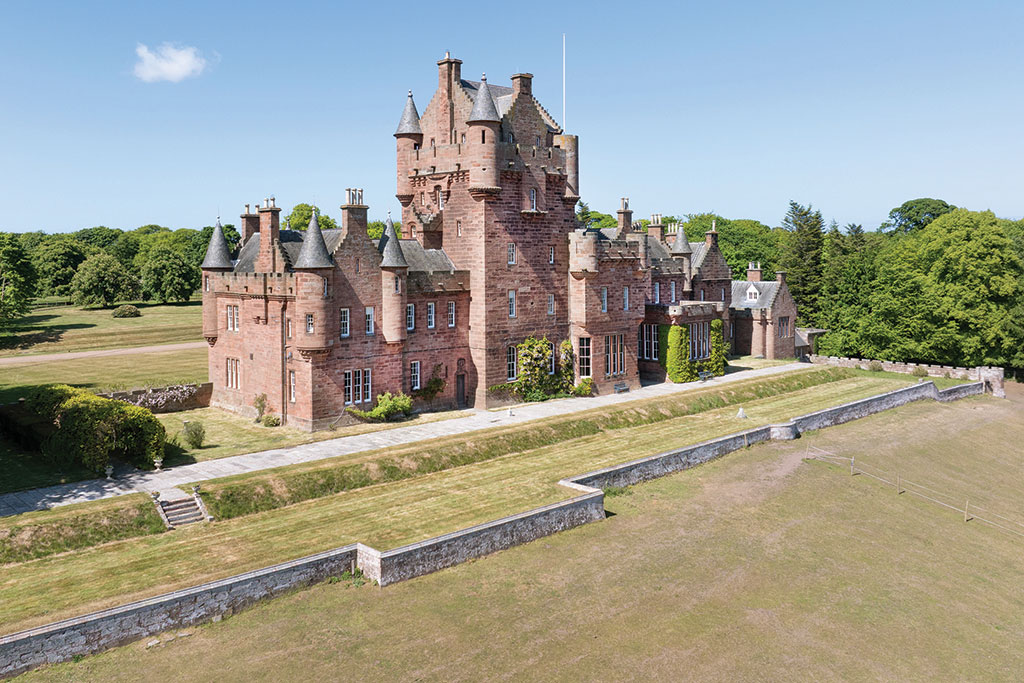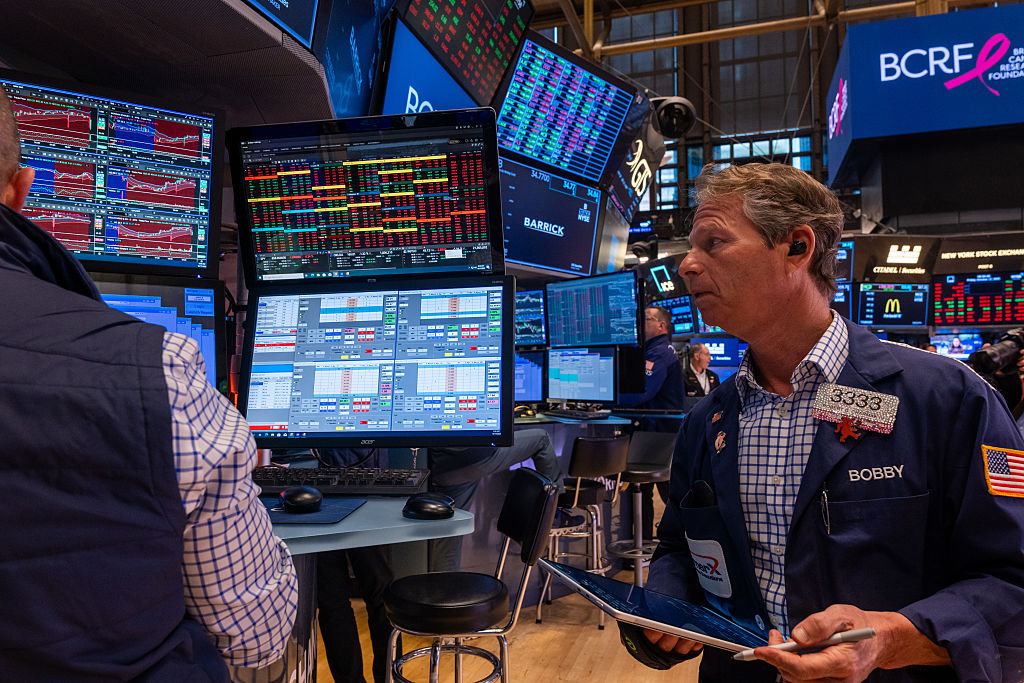
The last 50 years have been kind to investors in real terms. Everything made money: equities, bonds, property and gold. All investors had to remember was not to buy high and sell low. But that hasn’t always been the case. According to Barclays, UK equity prices were flat in inflation-adjusted terms in the 50 years to 1976. They doubled in the US, but that meant an annual gain of just 1.4%. Investors needed to reinvest their highly taxed dividends to grow their capital in real terms, but even so, the total return from UK equities for the 15 years to 1976 was zero.
Gilts fared even worse. An investor starting in 1926 had lost over 90% of their capital in real terms by 1976. Even with gross income reinvested, they had lost 75% of their money – and, of course, the reinvestment of gross income was not available to individuals. Holders of US Treasuries did better in the 50 years to 1976; they lost a mere 75% of their capital.
Anyone who squirrelled away gold started off well. The dollar value rose 70% in 1933 when Roosevelt devalued the dollar, having required all private holders of gold in the US to surrender it at the old price. The price was then fixed at $35 an ounce until 1971.
MoneyWeek
Subscribe to MoneyWeek today and get your first six magazine issues absolutely FREE

Sign up to Money Morning
Don't miss the latest investment and personal finances news, market analysis, plus money-saving tips with our free twice-daily newsletter
Don't miss the latest investment and personal finances news, market analysis, plus money-saving tips with our free twice-daily newsletter
Property was a better investment. The price of the average house in the UK multiplied nearly 20-fold between 1926 and 1976 to about £12,000. But strict rent controls dating from the First World War ruled out buy-to-let for all but the most unscrupulous landlords. For British residents, investing outside the UK was academic. Strict exchange controls, introduced in 1947, made it legally impossible to buy overseas equities, bonds or property, or to own gold without paying a huge but volatile “dollar premium”.
The last 50 years have been much kinder to investors, but there have been plenty of traps for the unwary. The abolition of exchange controls in 1979, globalisation and the opening up of new markets, and novel strategies have increased the opportunity for UK investors to make fools of themselves. Information is much more readily available, but it doesn’t necessarily lead to better decisions. It’s as easy to be carried along by the herd as ever. Consider the following examples.
Investment #1: gold
The price rose from $35 an ounce to a peak of $850 in 1980, driven ever higher by the prognostications of the Aden sisters, who had relocated to Costa Rica so that their Delphic prophecies would not be interrupted by contact with the real world. The price then fell to $300 in 1999 as high real interest rates and falling inflation rendered “the barbarous relic” unattractive.
At this stage, Gordon Brown, Britain’s chancellor, decided to sell half of Britain’s gold reserves. The 395 tonnes raised $3.5bn against a current value of $46bn. Even at the time, this sale was recognised as a contrarian “buy” signal. Since then, the price has risen at a compound yearly rate of 10%.
Investment #2: Japan
The Nikkei index reached nearly 40,000 in 1989, when it represented more than half of the MSCI World Index. In a parallel property boom, land prices increased 50-fold between 1956 and 1986, reaching $139,000 per square foot in Tokyo. It was calculated that the Imperial Palace in Tokyo was worth as much as the whole of California.
The booming stock market was driven not by earnings but, it was said, by Japanese housewives and gullible foreigners. Japanese companies had very little in the way of earnings and rarely paid dividends, financing investment through the sale of warrants and convertible bonds with derisory yields. Western pundits sought to rationalise this on the basis that Japan’s economic miracle would go on forever.
The market then halved in barely two years but only reached a low in 2009, 80% below the peak. Many investors invested prematurely for a turnaround, but recoveries soon petered out. A sustained recovery started in 2012, and the Nikkei index only passed its old peak in 2024.
Investment #3: the dotcom bubble
Stock markets soared in the late 1990s on the back of the technology sector, but the media, telecoms and biotechnology industries were also caught up in the excitement. Share prices ran way ahead of earnings. As Ed Yardeni of Yardeni Research points out, the technology and communications sector came to comprise 41% of the S&P 500 in early 2000 but only 24% of earnings. Moreover, these earnings proved largely unsustainable, so by 2003 the figures had fallen to 18% and 13% respectively.
Within three years of their 2000 peaks, the S&P 500 and the FTSE 100 indices had nearly halved. The FTSE 100 didn’t reach a new peak until 2017, but the S&P 500 achieved it 10 years earlier in 2007, thanks to the rebound of the technology sector. Technology and communications now account for 43% of the S&P 500 but 38% of prospective earnings, while in the UK, the technology, media and telecommunications (TMT) sectors have never recovered.
In 2003, shares such as Amazon and Microsoft could have been bought at bargain prices, giving rise to a revisionist view that the TMT bubble was the dawn of a new age rather than a blind alley. But many of the shares that drove the market higher then have either disappeared or are a shadow of their former selves.
The list of forgotten firms from that era that were once in the FTSE 100 is long, including Freeserve, Thus, Colt Telecom, Baltimore Technologies, CMG, Psion, Kingston Communications and Bookham. ARM has since re-emerged stronger than ever, while Autonomy was controversially bought by Hewlett Packard. FTSE 100 veterans Cable & Wireless and GEC were destroyed by poor acquisitions.
Lastminute.com was founded in 1998 as an online bucket shop for unsold package holidays and hotel rooms. When it was floated in London in March 2000 by Brent Hoberman and Martha Lane Fox it was valued at £570 million, and the valuation soon peaked at £770 million. It was sold in 2014 for £76 million and lingers on.
Investment #4: Woodford Patient Capital Trust
Neil Woodford built a reputation at Invesco managing unit and investment trusts offering generous income. Investing for income became popular after the collapse of the TMT bubble. Income can either be reinvested for good long-term returns or taken out, but not both. This is not always clear in the marketing.
Chafing at the constraints put on him by Invesco, Woodford left in 2014 to found his own business. He started an equity income fund which, at its peak, managed over £10 billion and, in 2015, launched an investment trust, Patient Capital. Initially, £200 million was targeted but this was soon increased to £800 million. The so-called independent directors were associates of Woodford, and the trust was to invest not just in income-generating larger companies but also in high-risk smaller and unquoted companies, mostly technology or biotechnology related.
This was an area of the market in which he had, in the past, dabbled without success. His investment process was akin to throwing mud at the wall in the hope that some of it would stick. Such investments also made their way into the equity income fund but poor performance led to mass withdrawals and a crisis in the remaining rump of illiquid investments.
Investment #5: Global Absolute Return Strategies
The idea behind GARS, launched in the wake of the 2008 financial crisis, was to offer investors hedge fund-like performance at much lower fees and with better liquidity. The fund, managed by Standard Life, offered the prospect of returns of 5% above cash over rolling three-year periods through a multi-asset portfolio of investment and trading ideas from the supposedly clever people at Standard Life.
Good initial performance led to a flood of inflows from pension funds and other investors seeking a quiet life but with great returns. GARS peaked at £53 billion under management in 2014 but copycat funds at Aviva, Invesco and Investec (now rebranded as Ninety One) made the overall pool much larger.
With too much money chasing too few opportunities, performance soon flagged, then turned negative and investors exited. Even so-called “macro” hedge funds hit hard times. With assets down to just £1.3 billion, GARS was shut down in 2023. The idea that second-rate fund managers could make great risk-adjusted returns on huge pots of money from staring at Bloomberg screens was always idiotic.
Investment #6: bonds
The bull market in government bonds started in the inflation-ravaged late 1970s and early 1980s and lasted more than 40 years. At its peak in 2020, 10-year gilts were yielding just 0.25% and 10-year US Treasuries 0.68%, well below the inflation target rate of 2%. Merrill Lynch had calculated in 2016 that interest rates were at their lowest for 5,000 years, but Covid drove them even lower.
Bond yields followed, with the UK repaying its undated 3½% War Loan in 2015 before yields plunged further. In 2021, the Financial Times calculated that “bonds worth $15 trillion, more than a fifth of all debt issued by governments and companies around the world” were trading at negative yields. This was surely the biggest bubble of all time.
Many of the UK’s defined-benefit pension fund managers, chasing the illusion of “liability-driven investment”, were not only heavily invested in government bonds but had bought on margin (ie, borrowed to buy more) to increase their exposure. When rising inflation started to push bond yields higher, they became forced sellers, forcing yields higher still. The FT, using data from the Pension Regulator, estimated that pension funds lost £425 billion in 2022 while other estimates exceed £500 billion. No wonder they have insufficient money to invest in British businesses or infrastructure.
Normally, the managers responsible would have been fired, never allowed to work in financial services again and possibly jailed. Fortunately for them, blame for the fiasco was deflected by the political and media establishment onto the government of Liz Truss – as if gilts would still be yielding 0.25% without her ill-timed budget.
Investment #7: bitcoin
The cryptocurrency market is estimated at $3 trillion, and many believe this constitutes a massive bubble ready to implode. However, law-abiding people in law-abiding countries without exchange controls will never appreciate the attraction of cryptocurrencies. Legitimate investors are just the tip of the iceberg, accounting for less than 10% of the market.
They have done well by defying responsible advice but should beware any sign of an end to the war in Ukraine, as Russia pays its troops in bitcoin. This can be accessed anywhere in the world by survivors or next of kin, so rising prices keep them fighting. This makes bitcoin the world’s most unethical investment.
This article was first published in MoneyWeek's magazine. Enjoy exclusive early access to news, opinion and analysis from our team of financial experts with a MoneyWeek subscription.
Get the latest financial news, insights and expert analysis from our award-winning MoneyWeek team, to help you understand what really matters when it comes to your finances.

Max has an Economics degree from the University of Cambridge and is a chartered accountant. He worked at Investec Asset Management for 12 years, managing multi-asset funds investing in internally and externally managed funds, including investment trusts. This included a fund of investment trusts which grew to £120m+. Max has managed ten investment trusts (winning many awards) and sat on the boards of three trusts – two directorships are still active.
After 39 years in financial services, including 30 as a professional fund manager, Max took semi-retirement in 2017. Max has been a MoneyWeek columnist since 2016 writing about investment funds and more generally on markets online, plus occasional opinion pieces. He also writes for the Investment Trust Handbook each year and has contributed to The Daily Telegraph and other publications. See here for details of current investments held by Max.
-
 Metals and AI power emerging markets
Metals and AI power emerging marketsThis year’s big emerging market winners have tended to offer exposure to one of 2025’s two winning trends – AI-focused tech and the global metals rally
-
 8 of the best houses for sale with beautiful fireplaces
8 of the best houses for sale with beautiful fireplacesThe best houses for sale with beautiful fireplaces – from a 15th-century cottage in Kent to a 17th-century palazzo in Oxfordshire
-
 Metals and AI power emerging markets
Metals and AI power emerging marketsThis year’s big emerging market winners have tended to offer exposure to one of 2025’s two winning trends – AI-focused tech and the global metals rally
-
 8 of the best houses for sale with beautiful fireplaces
8 of the best houses for sale with beautiful fireplacesThe best houses for sale with beautiful fireplaces – from a 15th-century cottage in Kent to a 17th-century palazzo in Oxfordshire
-
 Literacy Capital: A trust where great returns fund a good cause
Literacy Capital: A trust where great returns fund a good causeThere’s plenty to like about specialist private-equity trust Literacy Capital, says Max King
-
 An AI bust could hit private credit – could it cause a financial crisis?
An AI bust could hit private credit – could it cause a financial crisis?Opinion Private credit is playing a key role in funding data centres. It may be the first to take the hit if the AI boom ends, says Cris Sholto Heaton
-
 8 of the best ski chalets for sale now
8 of the best ski chalets for sale nowThe best ski chalets on the market – from a traditional Alpine-style chalet in Switzerland to an award-winning Modernist building in Japan’s exclusive ski areas
-
 Leading European companies offer long-term growth prospects
Leading European companies offer long-term growth prospectsOpinion Alexander Darwall, lead portfolio manager, European Opportunities Trust, picks three European companies where he'd put his money
-
 How to harness the power of dividends
How to harness the power of dividendsDividends went out of style in the pandemic. It’s great to see them back, says Rupert Hargreaves
-
 Tetragon Financial: An exotic investment trust producing stellar returns
Tetragon Financial: An exotic investment trust producing stellar returnsTetragon Financial has performed very well, but it won't appeal to most investors – there are clear reasons for the huge discount, says Rupert Hargreaves
